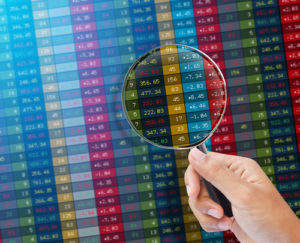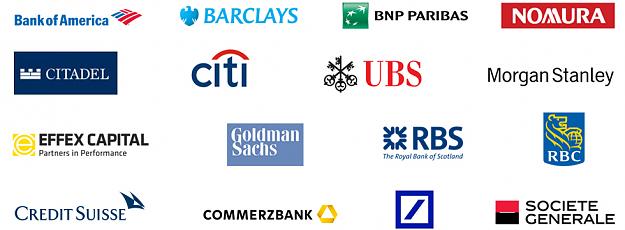 In the world of trading, one of the most important elements that enable profitable transactions is the existence of a liquid market, and the forex market is no exception to this general rule. Having greater liquidity in a financial market makes transactions flow more easily and pricing more competitive.
In the world of trading, one of the most important elements that enable profitable transactions is the existence of a liquid market, and the forex market is no exception to this general rule. Having greater liquidity in a financial market makes transactions flow more easily and pricing more competitive.
Due to the enormity of the forex market, which currently experiences daily transaction volumes in excess of six billion U.S. Dollars per business day, foreign exchange market liquidity has no equal in any other capital market anywhere in the world in terms of liquidity available to traders in the major currency pairs.
Despite the pronounced liquidity typically seen in the majors, minor and exotic currency pairs can still experience liquidity issues, especially when unexpected news events or key economic data releases shock the market and cause dealing spreads to widen.
Perhaps the best-known role played by those who provide liquidity to the forex market, often called liquidity providers, is to act as a professional market marker who makes exchange rate quotations to others. Still, other forex market participants can also take an important role in increasing market liquidity by boosting trading volume with their transactions.
What Does Liquidity Mean?
Defining liquidity in finance and investments terminology will generally refer to how fast an investor can turn their investment in to cash. For example, a purchase or sale of a stock generally takes five business days to settle, while most forex transactions take two days, the exception is the Canadian Dollar against the U.S. Dollar, which settles on the next business day.
An example of a market with low liquidity is the real estate market. A real estate transaction typically involves much more than a two or five day settlement period, with some real estate transactions taking years to complete.
While illiquid market conditions may arise in the forex market, the vast majority of transactions are completed expediently and in a timely manner. The notably high amount of currency market liquidity typically available allows for competitive dealing spreads and the capability of the market to absorb large orders without affecting the market.
Who Provides Liquidity to the Forex Market?
The term “liquidity provider” is typically used to refer to a market maker, but several other types of forex market participants provide liquidity to the market by increasing its transaction volume.
These types include central banks, major commercial and investment banks, multi-national corporations, hedge funds, foreign investment managers, retail forex brokers, retail traders, and high net worth individuals. Currency futures market makers, hedgers, high-frequency traders, and speculators also contribute liquidity.
The forex market also has many active participants within each type of participant. The high degree of forex trading liquidity observed in the market is a direct result of the participation of so many companies, organizations, individuals, and governments in this international marketplace.
Currency Market Liquidity
One contributing factor to the notable liquidity seen in the FX market is its hours of operation since the OTC currency market is open for trading around the clock, starting from the Wellington or Sydney open on Sunday afternoon to the New York close on Friday afternoon.
As the preceding section illustrates, one of the other key factors that contribute to the deep liquidity in the foreign exchange market is the high number of active participants operating all over the world.
While today’s retail forex market allows pretty much anyone with a nominal investment and an Internet connection to trade foreign currencies, before the advent of the internet and online trading, forex liquidity providers were mostly large institutions and commercial banks. Providers of liquidity today are not just the large banks operating in major money center cities, but also online brokers that make markets to retail clients situated all over the world via the Internet.
Different Types of Forex Liquidity Providers
A forex liquidity provider is an institution or individual that acts as a market maker in the foreign exchange market. Being a market maker means to act as both buyer and seller of a given asset class or exchange rate in the case of the forex market.
The role of the liquidity provider is to ensure greater price stability through taking positions in currency pairs which can either be offset with another market maker or added to the market maker’s book to be liquidated at a later time. Many forex market makers also watch orders and call levels for clients, and they stand ready to execute market orders on their behalf.
The top liquidity providers in the foreign exchange market are known as “Tier 1” liquidity providers. Tier 1 liquidity providers consist of the largest investment banks with extensive foreign exchange departments, providing buy and sell quotes for all the currency pairs they make markets in and often offering other services to their clients, such as CFD trading.
Most Tier 1 liquidity providers offer the tightest spreads for the currency pairs they make markets on, and they often trade positions to make money instead of just relying on the bid/offer spread to make their money. This gives the Tier 1 provider a significant opportunity to make profitable trades.
Liquidity Providers in the Interbank Forex Market
The U.S. Securities Exchange Commission defines a “market maker” as a firm that stands ready to buy or sell stock on a regular and continuous basis at a publicly quoted price.
In the forex market, the term “market maker” can refer to both a company that makes markets in currency pairs, as well as to an individual trader working at such a company who performs this function on its behalf.
The primary liquidity providers in the over the counter Interbank forex market are market makers operating at major commercial banks and some investment banks. They are generally willing to quote both a buy and sell price on a currency pair to both their professional counterparties and to non-professional client counterparties who usually ask for exchange rate quotes via their company’s dealing desk.
Most online forex brokers and many commercial and investment banks with active foreign exchange divisions are market makers in a variety of currency pairs. In general, a forex market maker will willingly buy forex positions from and sell forex positions to their clients at virtually any time the market is open.
Market makers are generally compensated by the differential between the bid rate and the ask rate that is typically known as the dealing spread. The dealing spread is charged for providing this liquidity as a service.
The existence of more market makers operating in a particular currency pair tends to increase liquidity, reduce the costs of making forex trading transactions for clients, and facilitate trading in general since pricing tends to be tighter and more readily available during fast markets.
Due to their involvement with servicing corporations that require foreign exchange transactions, large commercial banks remain the principal liquidity providers in the forex market. It is important to note that they do not always quote their clients and other professional counterparties the prevailing market price. Instead, they generally quote a two-sided price based on how they anticipate currency movements will take place and what they think the counterparty might be interested in doing.
Reading the counterparty, or showing a lower bid if they think the counterparty is a seller or a higher offer if they think the counterparty is a buyer is a pretty common practice among forex market makers.
Potential clients of these market makers for dealing forex transactions can include companies, hedge funds, individual traders and smaller banks.
While some companies are involved in the forex market to obtain currency to operate abroad and are generally looking at much longer term moves, some short-term forex traders will tend to access the market much more often to benefit from fluctuating movements in the exchange rate as they look to sell high and buy low.
The image below depicts the company logos of some of the largest Tier 1 banks that currently provide liquidity to the forex market as market makers.

Figure #1 – This graphic shows the company logos of many of the major forex market liquidity providers that actively make markets in a variety of forex currency pairs to their professional counterparties and clients.
One type of arrangement that has become increasing popular is the Prime of Prime (PoP) broker arrangement. Prime of Prime refers to a company that has an established relationship in place with a global Prime broker. These companies can then offer liquidity services to other forex brokers, crypto brokers and related financial services firms.
One such company that specializes in Prime of Prime services is B2Broker. Their cutting edge technology solution allows their clients access to institutional liquidity pools and benefit from the most competitive spreads in the industry.
How Online Forex Brokers Provide Liquidity to the Retail Market
An individual trader, unless they are extremely wealthy and trade in large amounts, will never get direct access to a Tier 1 liquidity provider. Instead, their access to the forex market will be provided by an online broker or by a secondary liquidity provider like a small bank or payments company who accepts retail clients.
Reputable online brokers typically use at least some Tier 1 liquidity providers to fill most of their orders. These types of institutions only enter into relationships with providers that are financially sound to help reduce their counterparty risk.
Online forex brokers typically access an ECN/STP network to execute their trades. ECN stands for Electronic Communications Network, while STP stands for Straight through Processing. Other brokers operate on an NDD or No dealing desk basis, meaning that all their transactions go directly to a Tier 1 or secondary liquidity provider.
Brokers that operate a dealing desk take on the role of a liquidity provider by allowing their clients to buy and sell on their system with the broker taking the other side of the transaction and laying off excessive risk with professional counterparties as deemed necessary. These firms effectively act as market makers and their business takes advantage of the fact that the majority of retail traders lose money when they trade.
Online Forex Broker Models
Online forex brokers typically connect with more than one liquidity provider to improve their dealing rates and spreads. By connecting with multiple liquidity providers, the broker can offer their customers the best price obtainable from several liquidity providers.
Forex brokers usually establish electronic bridges to automatically connect their own or a third party trading platform with another platform that acts as an ECN.
These bridges are generally set up so that when the broker is connected to the ECN, they can select which orders or groups of clients have access to be processed by the ECN where those transactions are automatically covered, while orders from non-preferential clients may not be covered and can instead be routed to a B book, for example.
This is a hybrid situation where the broker passes through some transactions, while taking the other side of others. This situation is similar to that faced by Interbank market makers acting as liquidity providers who may choose to keep some positions and lay others off depending on their size and perhaps also on the sophistication of the client. Ultimately, the broker decides which orders should be covered by another liquidity provider and which ones should stay uncovered.
Many traders shy away from brokers that are market makers since they perceive a possible conflict of interest because the market maker who takes the other side of the customer’s trade stands to make money if the client loses money. This is one of the reasons that many larger forex traders tend to use ECN/STP forex brokers.
With an ECN/STP broker, the trader can be sure that the trade is being executed ultimately by a Tier 1 liquidity provider with the executing forex broker not taking any part or side in the transaction.
The Most Liquid Currency Pairs
A trader stands a better chance of making profitable trades in currency pairs that have higher liquidity. Higher liquidity in a currency pair is reflected in how tight the bid/offer spread is and how fast and by how much the market moves in reaction to a large order.
The most liquid currency pair on the foreign exchange market is without a doubt the Euro quoted against the U.S. Dollar or EUR/USD. This currency pair has an average daily volume in excess of 580 billion USD. Due to the number of participants, the depth of the market and the two currencies’ widespread international usage, bid /offer spreads on the EUR/USD currency pair can range from 0.25 to 1.8 pips.
After EUR/USD, the most liquid currency pair is USD/JPY or the U.S. Dollar quoted against the Japanese Yen with a 577 billion USD average daily volume. The spread on this currency pair is typically between 0.5 to 2.5 pips.
The third most liquid currency pair is the U.S. Dollar quoted against the Swiss Franc or USD/CHF. This currency pair typically has an average daily turnover of 400 billion USD. Spreads in the “Swissy” as the currency pair is known are typically 2.5 to 5 pips wide.
Fourth on our list is GBP/USD or the Pound Sterling quoted against the U.S. Dollar. This pair is also sometimes called “Cable” since quotations in this currency pair were historically made via the transoceanic cable. Typically, dealing spreads in this pair are between two and four pips wide, and it tends to have a higher volatility and a lower trading volume than EUR/USD, for example. Trading volume in the GBP/USD currency pair is estimated to be approximately 350 billion USD per day.
Having a 250 billion USD average daily volume, the Australian Dollar quoted against the U.S. Dollar or AUD/USD currency pair is fifth on the list. The dealing spread for this currency pair is generally between 2.5 and 4.5 pips. This currency pair is rather sensitive to commodities prices since Australia is a large producer of raw materials.
Other currency pairs that deserve mentioning due to their substantial trading volumes or strategic trading interest are: the New Zealand Dollar against the U.S. Dollar or NZD/USD; the Euro against Sterling or EUR/GBP; and the Euro against the Japanese Yen or EUR/JPY.
Trading in the above currency pairs, which are the most traded forex instruments in the world, usually presents the active trader with the best opportunity to make profitable transactions due to low transaction costs. Outside of these major pairs and currency crosses, a forex trader will find currency pairs with fairly wide bid/ask dealing spreads and considerably less little ability to absorb large transactions in comparison.
Conclusion
Liquidity is essential to efficient trading in the foreign exchange market or any market for that matter. Low levels of liquidity can cause sudden price moves in a currency pair. For example, if an institution such as bank receives a very large order, this transaction could move the market significantly in the short term.
While the importance of liquidity providers in the forex market cannot be understated, brokers who provide liquidity as market makers are often seen as having a conflict of interest with their clients, since taking the other side of their customers’ forex positions means they stand to gain at their customers’ detriment.